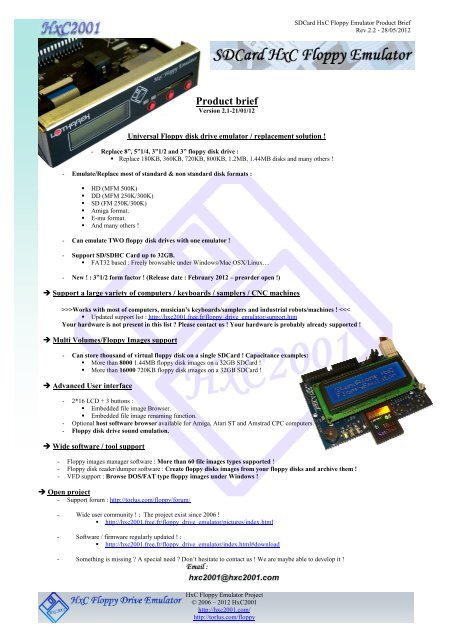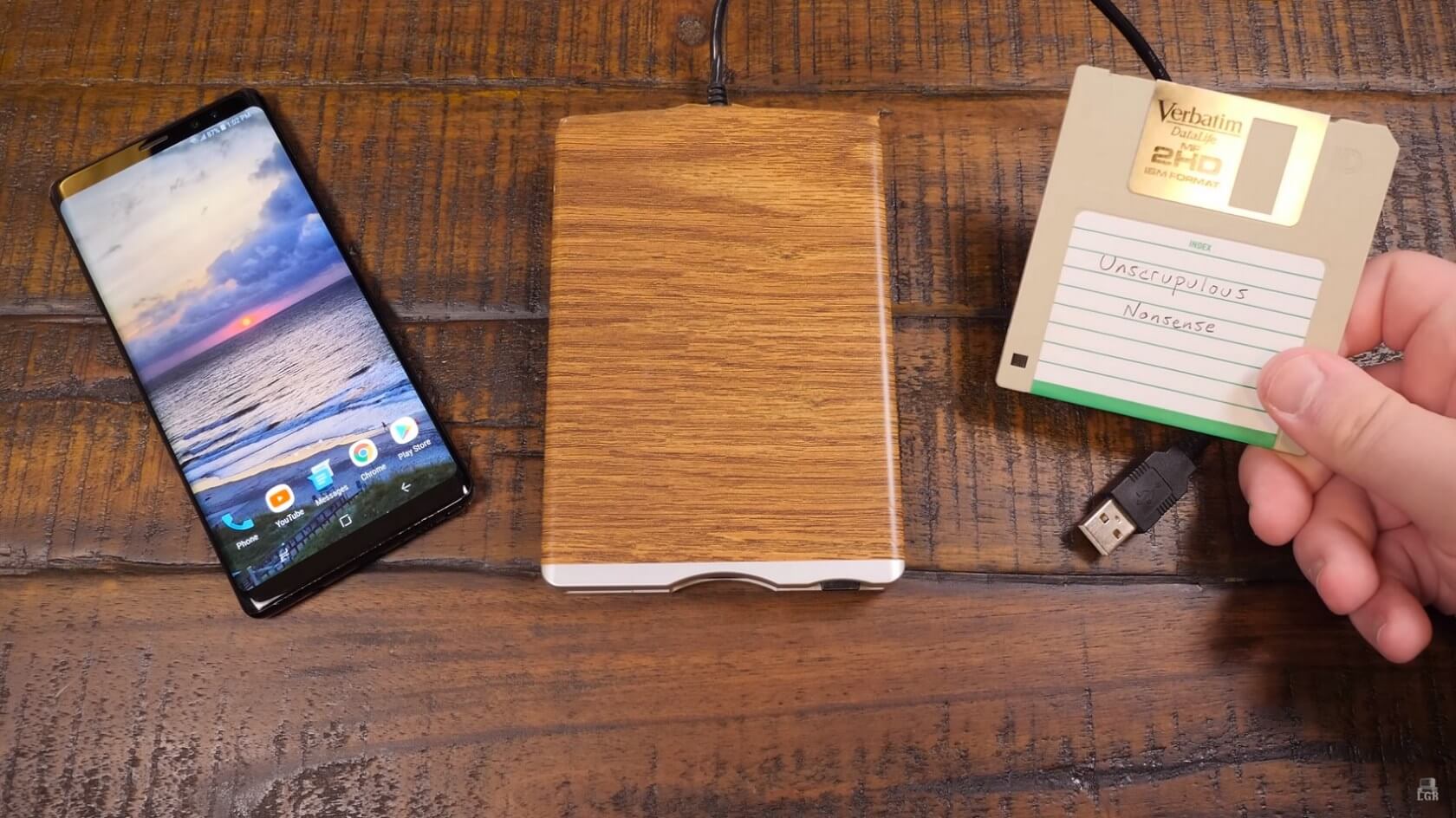

- #Floppy disk emulator software for mac os#
- #Floppy disk emulator software pdf#
- #Floppy disk emulator software software#
- #Floppy disk emulator software Pc#
- #Floppy disk emulator software download#

The other end of the wire is connected via one diode to the “free” pin of one button, respectively. On the pictures one can see the wire connected to pin 28. The diodes prevent that the buttons are short-cicuited and that signals on pin 28 coming from the bus can’t trigger an unwanted counting-up of the selected image. Using two schottky-diodes this “pulling to ground” is fed to pin 28 of the floppy-bus. That’s exactly what we need to simulate the media change. My solution relies on the fact that pressing the buttons pulls a dedicated line to GND (0V). Hence I present a “dead simple” solution for this that is easy to build and at least works like a charm for my Gotek floppy-emu: Putnik at this point for the analysis, further reading on this topic here.) A few older drives offered the option to get this demand by setting some jumper, but for modern drives or floppy-emus I’m quite sure there is no such option any more. So the disk change is not detected properly using the dedicated pin 2, but misusing the pin 28 (write protect) in that way, that this line is pulled to 0V (GND) for a short time when the user changes a disk. Unfortunately Atari saved a few pennies that days when designing the floppy-bus. The sorry subject detecting media(disk) change So selecting the desired disk via the two buttons and then using the program to write the ST-image on the disk. This, however, only worked running it on the Atari. (*) Using JayMSA I was able to write *.ST-Images on the virtual disks.
#Floppy disk emulator software Pc#
#Floppy disk emulator software software#
#Floppy disk emulator software for mac os#
Maybe there’s also appropriate software for Mac OS or Linux, but I don’t know.

So this means either the Ajax-FDC or a WD1772- 02– 02. That mean, it should run at 16MHz und should be able to stand this clockspeed permanently.

The following criteria have to be met if one want’s to use the 1.44MB-model of the floppy-emu with an Atari:
#Floppy disk emulator software download#
If you’re missing it, you can download it here.
#Floppy disk emulator software pdf#
Regarding this I found a PDF document on the CD of my version with the name “REPAIR SOLUTION – VB516.pdf”. If one has the old version, it is recommended to replace the resistors by 1 kOhm-resistors. If the value is 102 (= 1 kOhms), it’s already the updated version. One can distinguish the updated version by the values of “RN4″ to “RN6″ (red square in the picture). For the updated version certain chip-resistors have been reduced in their values, so that the detection runs reliable. “updated version” refers to a schematic error, that could have lead to the computer failing to detect that the drive is ready (please insert a disk…). On Amazon or ebay there are always a lot offers for about 20€ for the Gotek devices. Also, I feel the price of the HxC-emus a bit overdrawn. I decided for this paticular drive, because it (theoretically) can deal with 1000 disks and supports HD. This article should prove the opposite, since I successfully exchanged my internal HD-drive for the floppy-emu “SFR1M44-U100 updated version” from “Gotek”. One can find a lot of stuff and rumors about the “HxC floppy emulators” in relevant forums and also, that “cheap” alternatives won’t work with computers like Amiga or Atari.


 0 kommentar(er)
0 kommentar(er)
